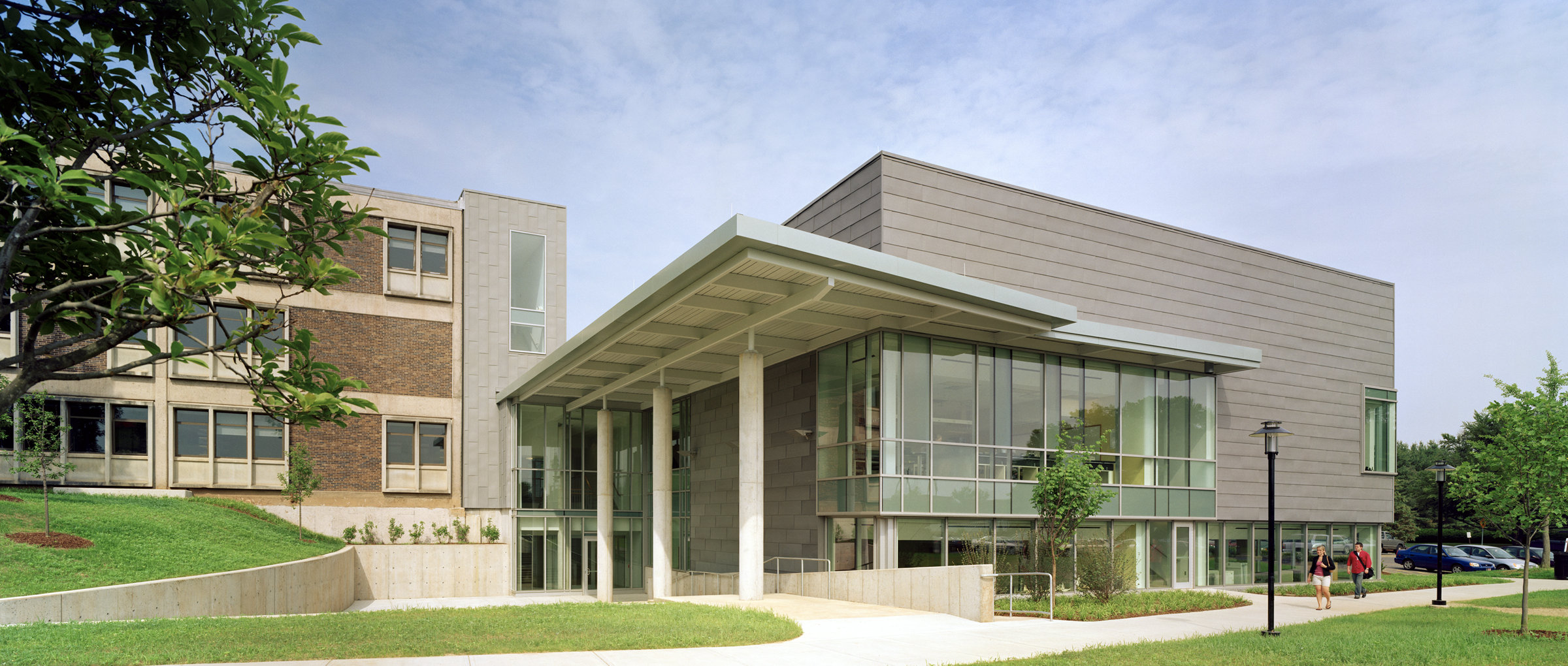
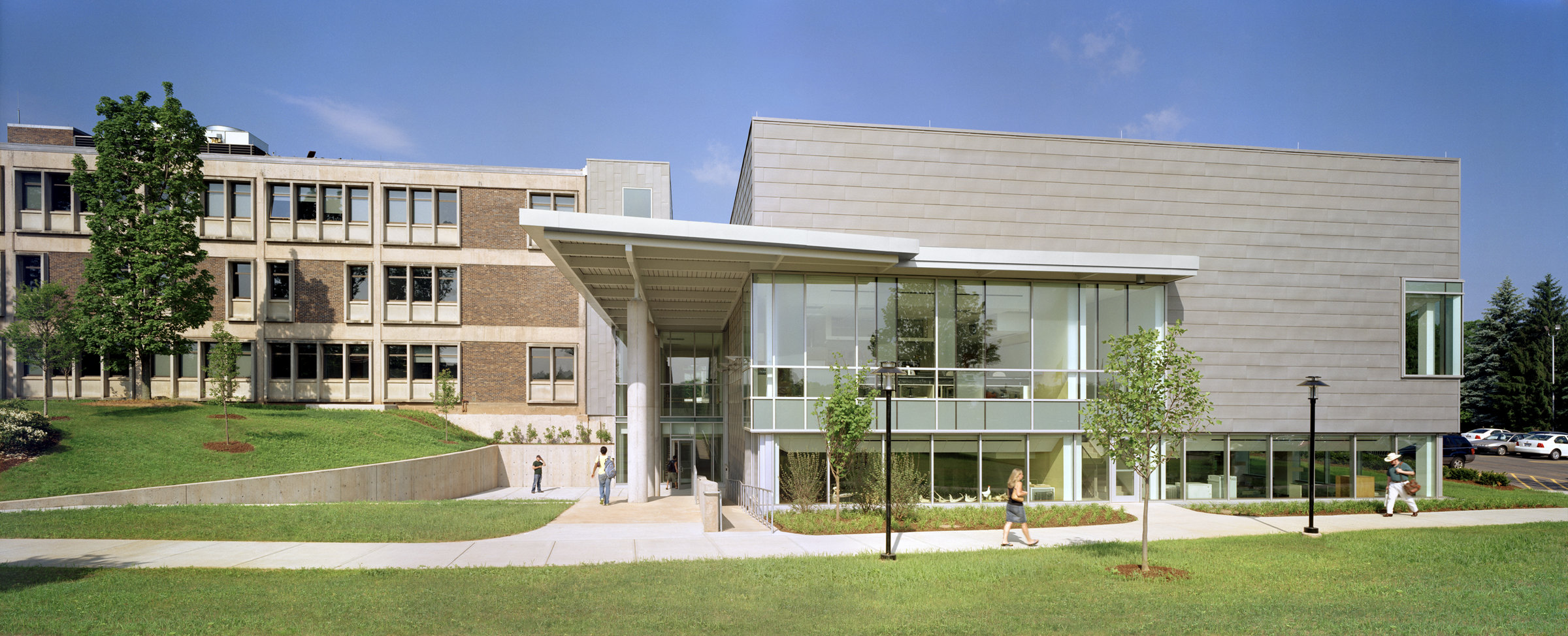
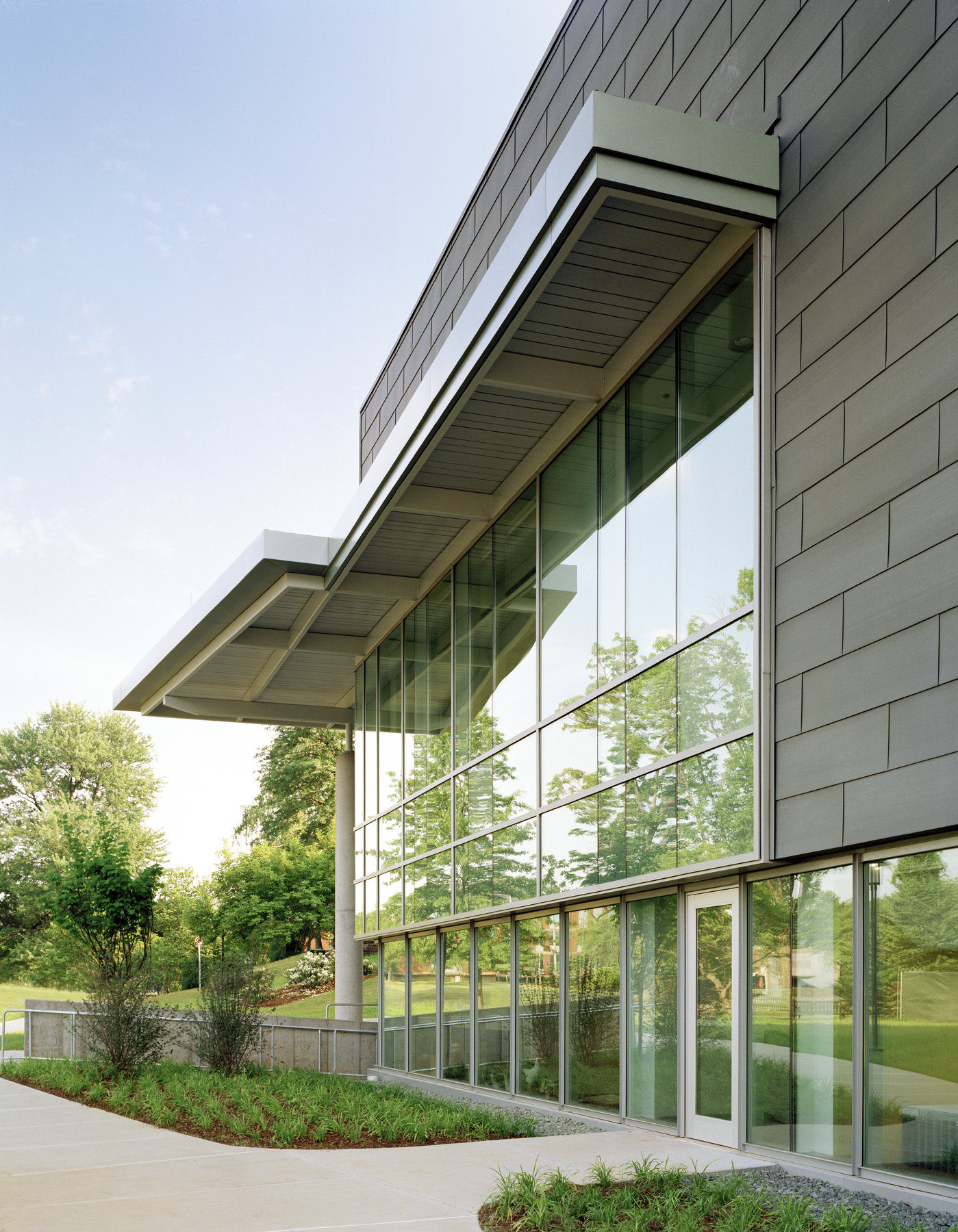
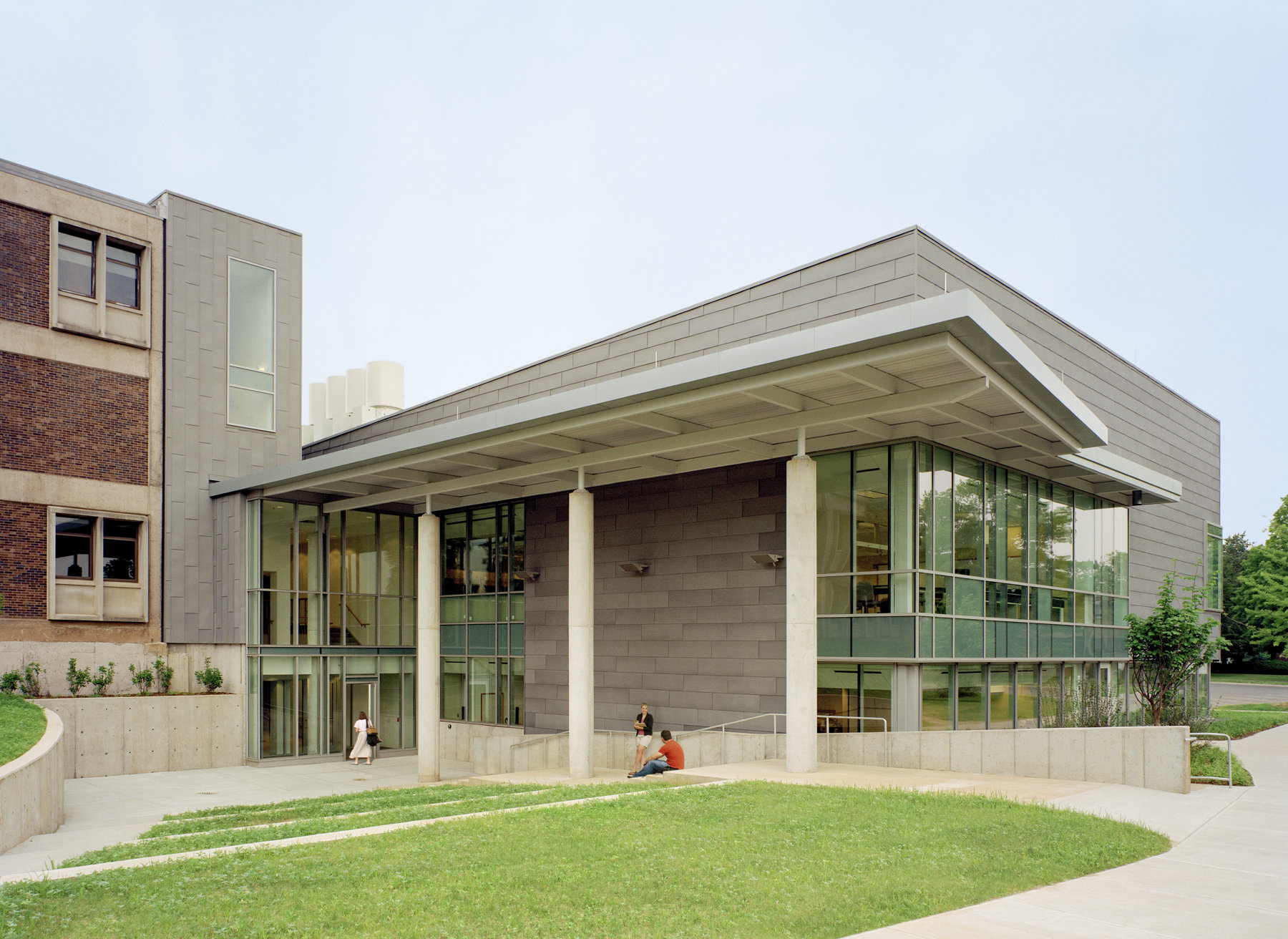

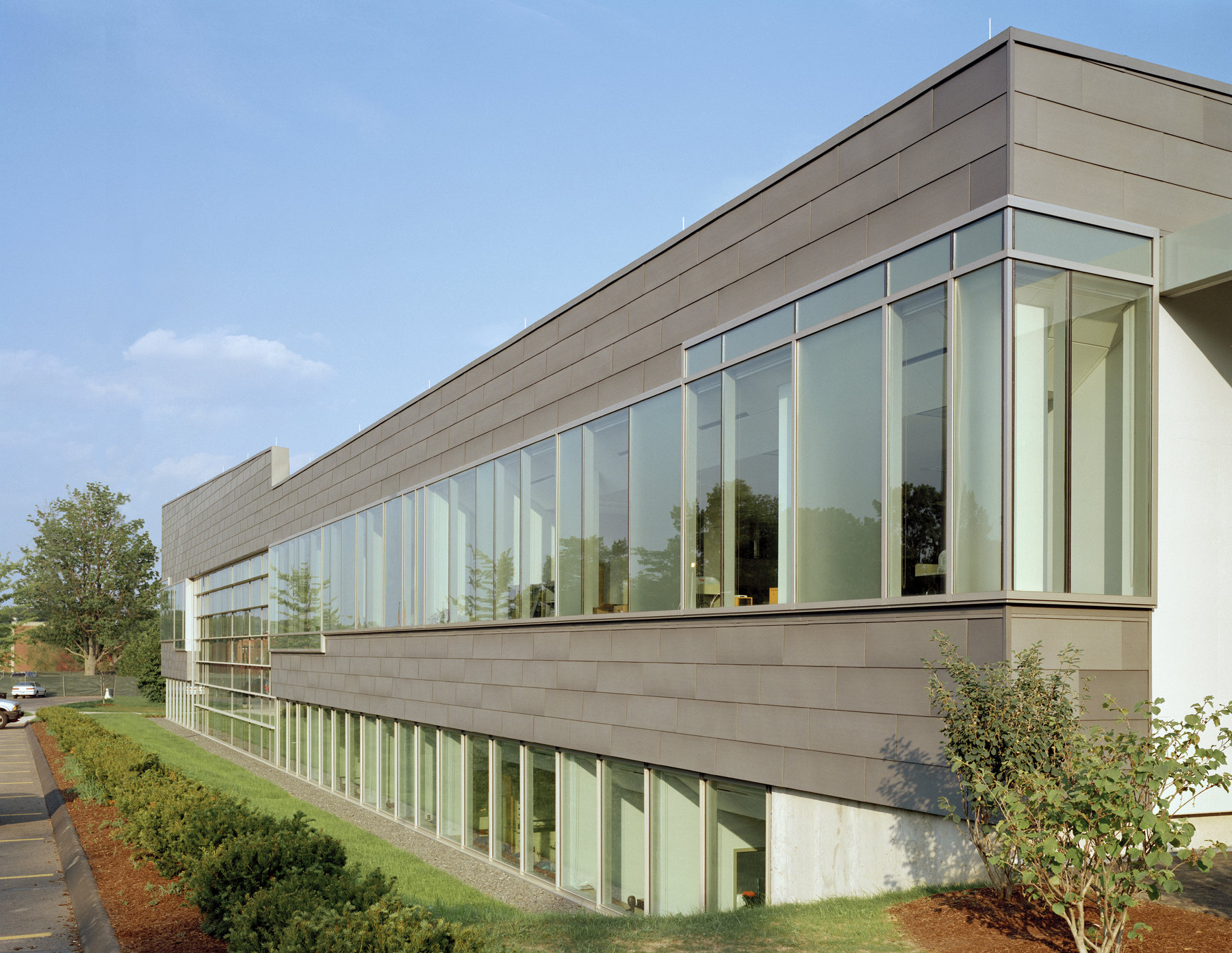
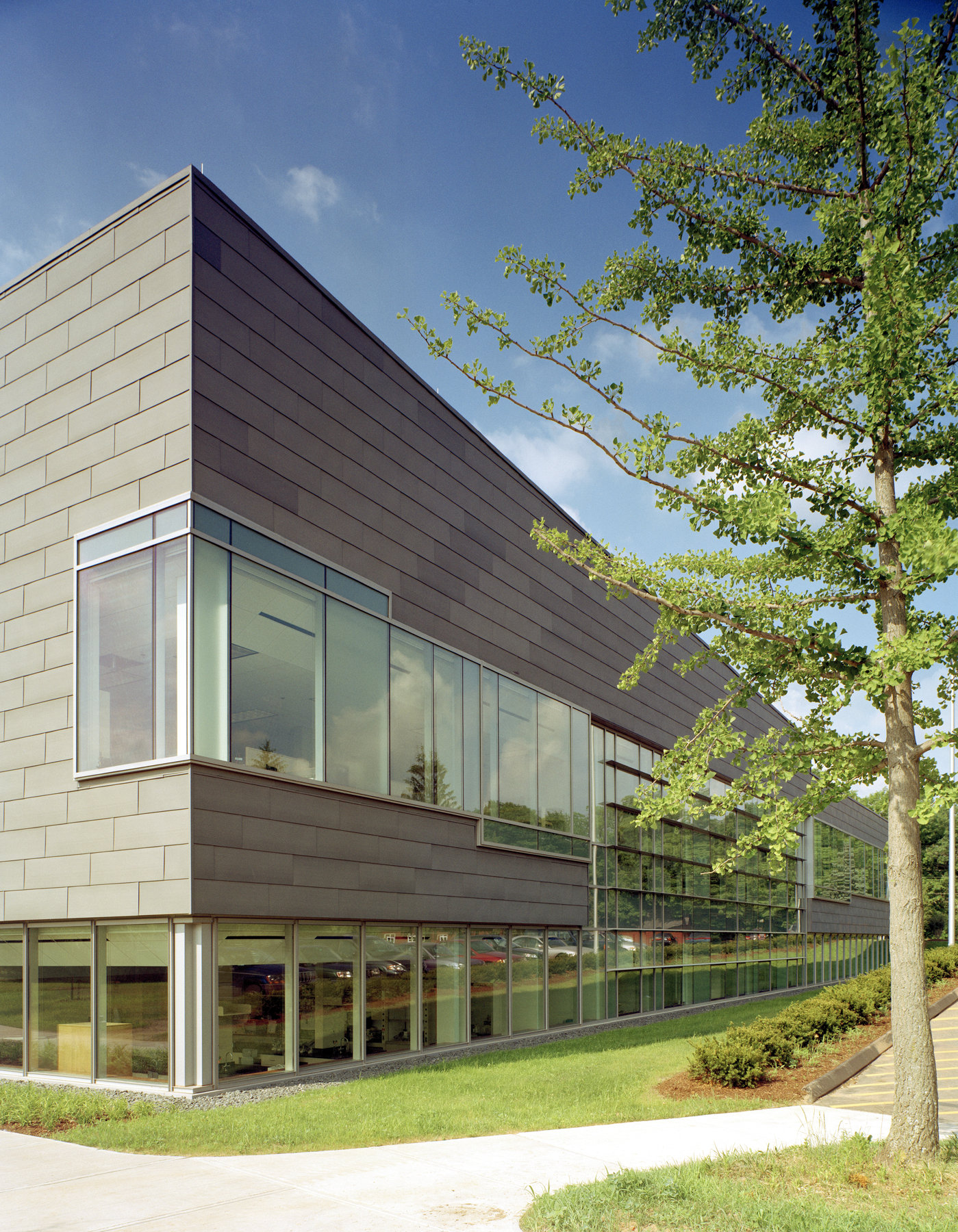
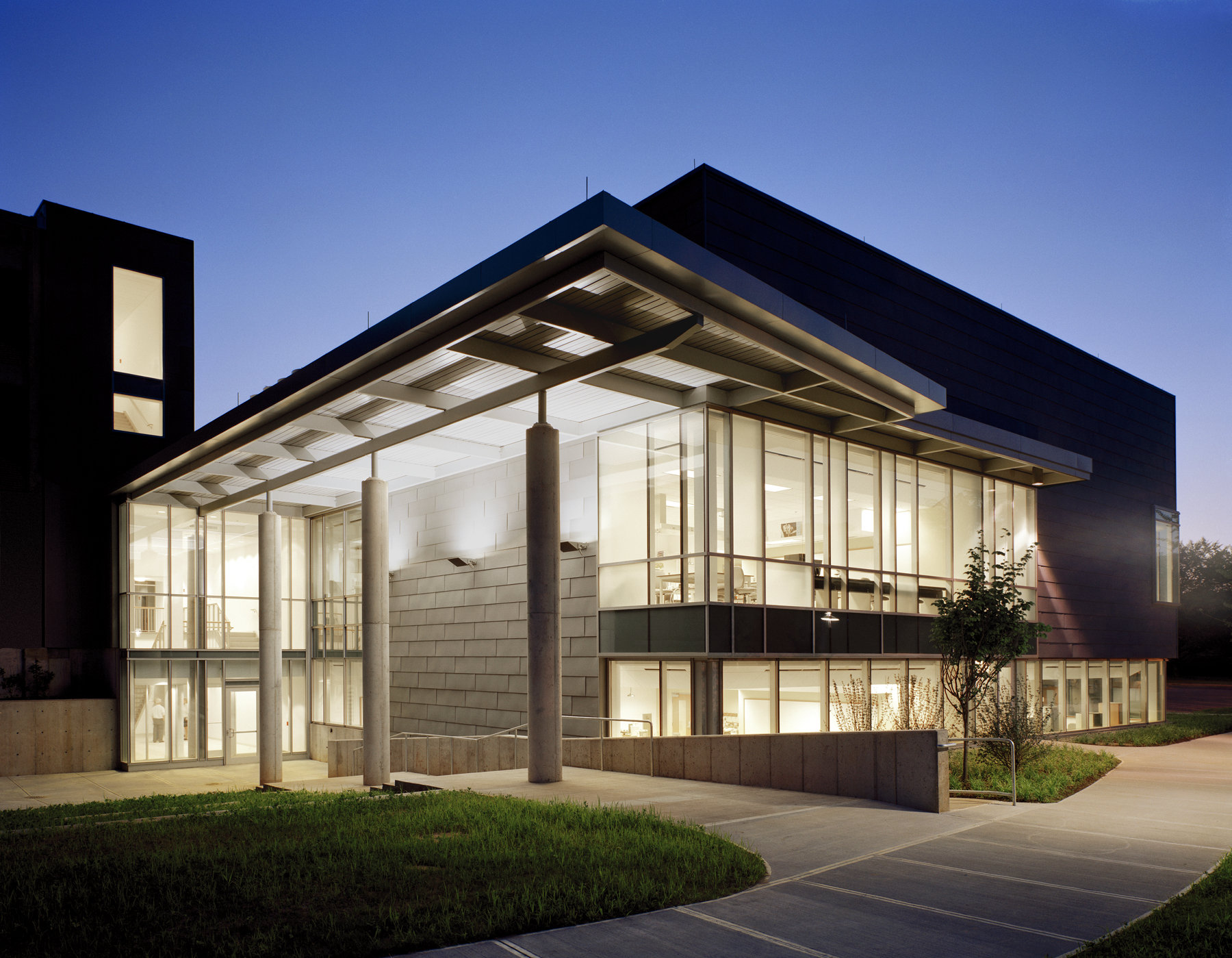
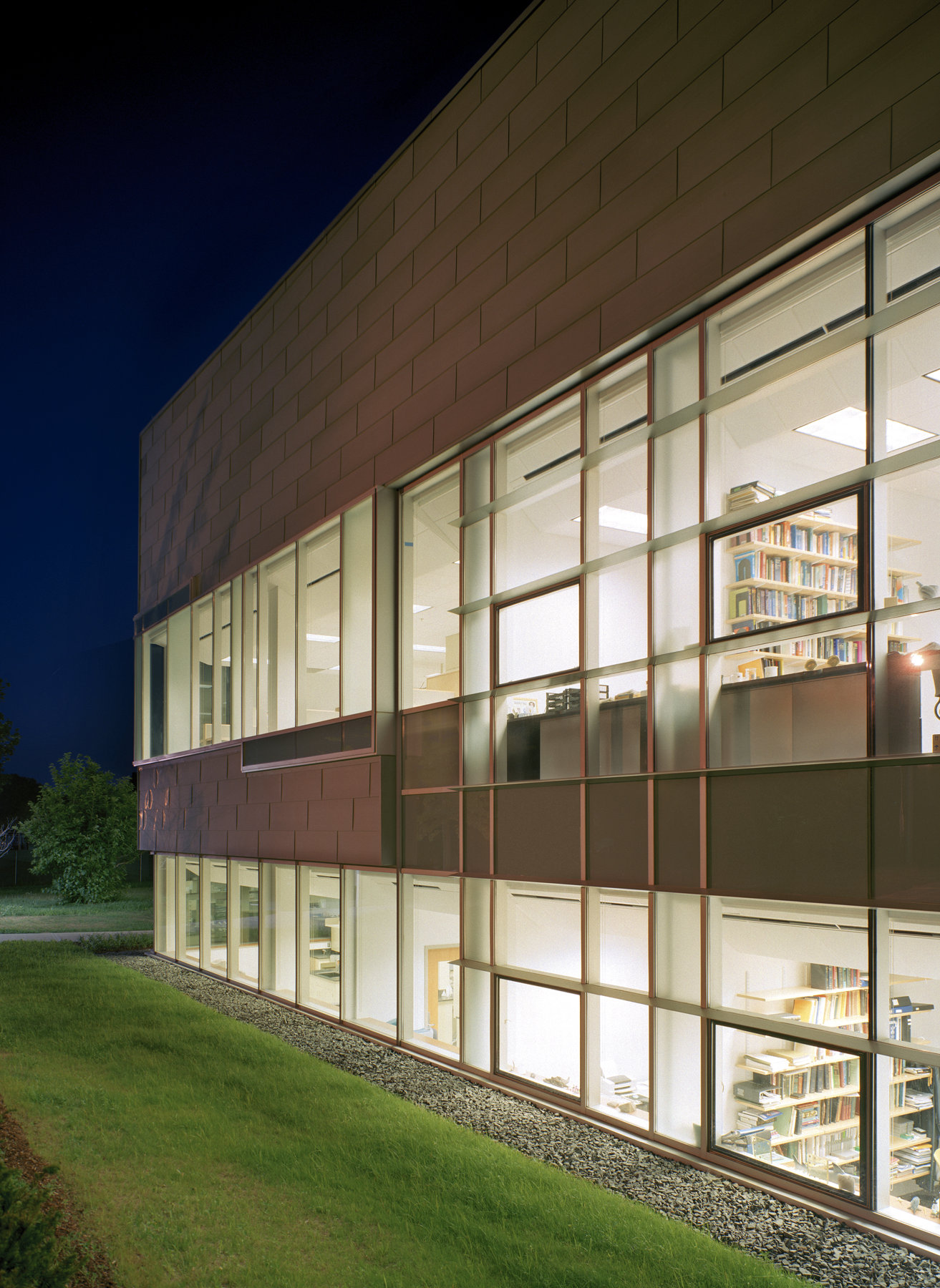
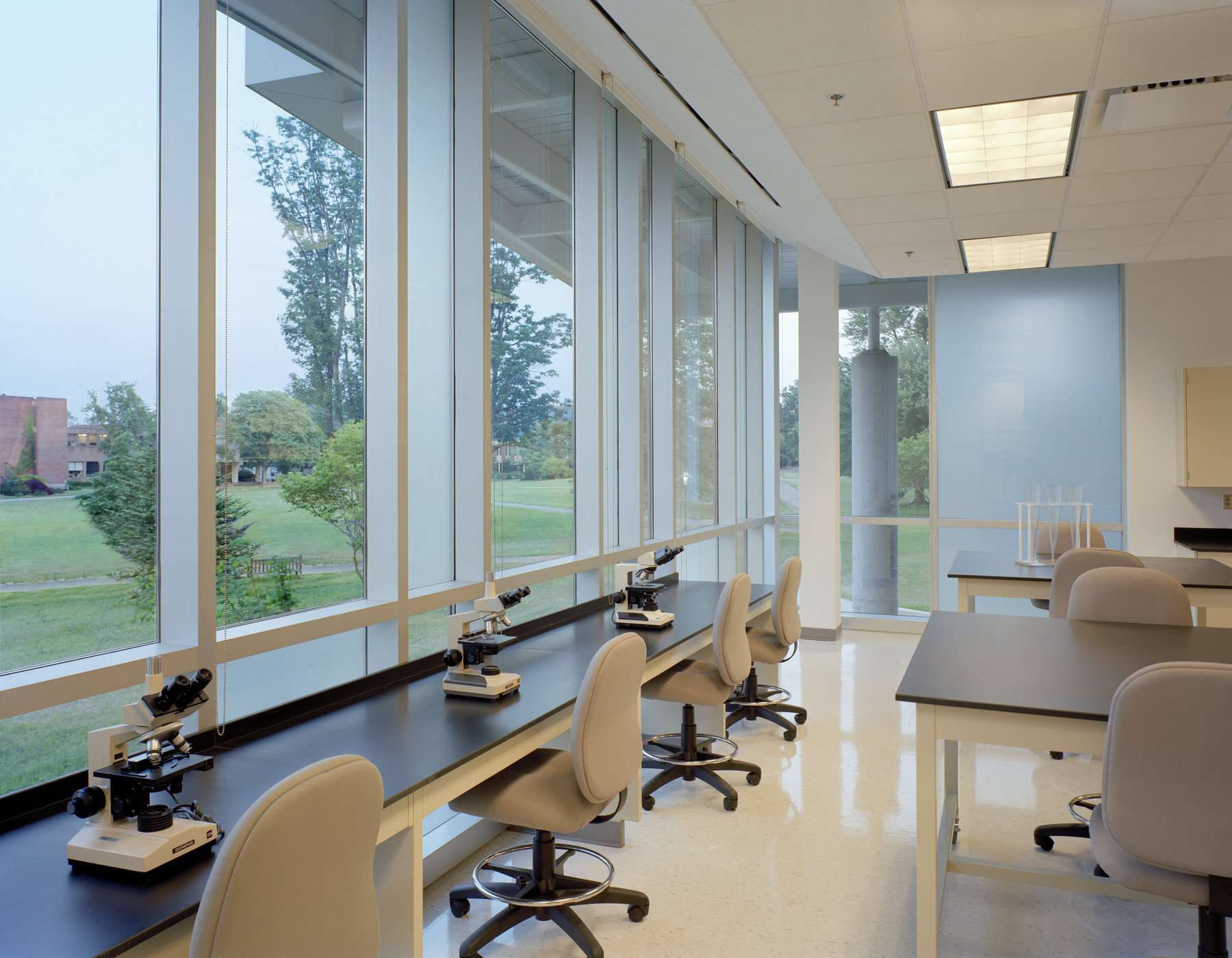
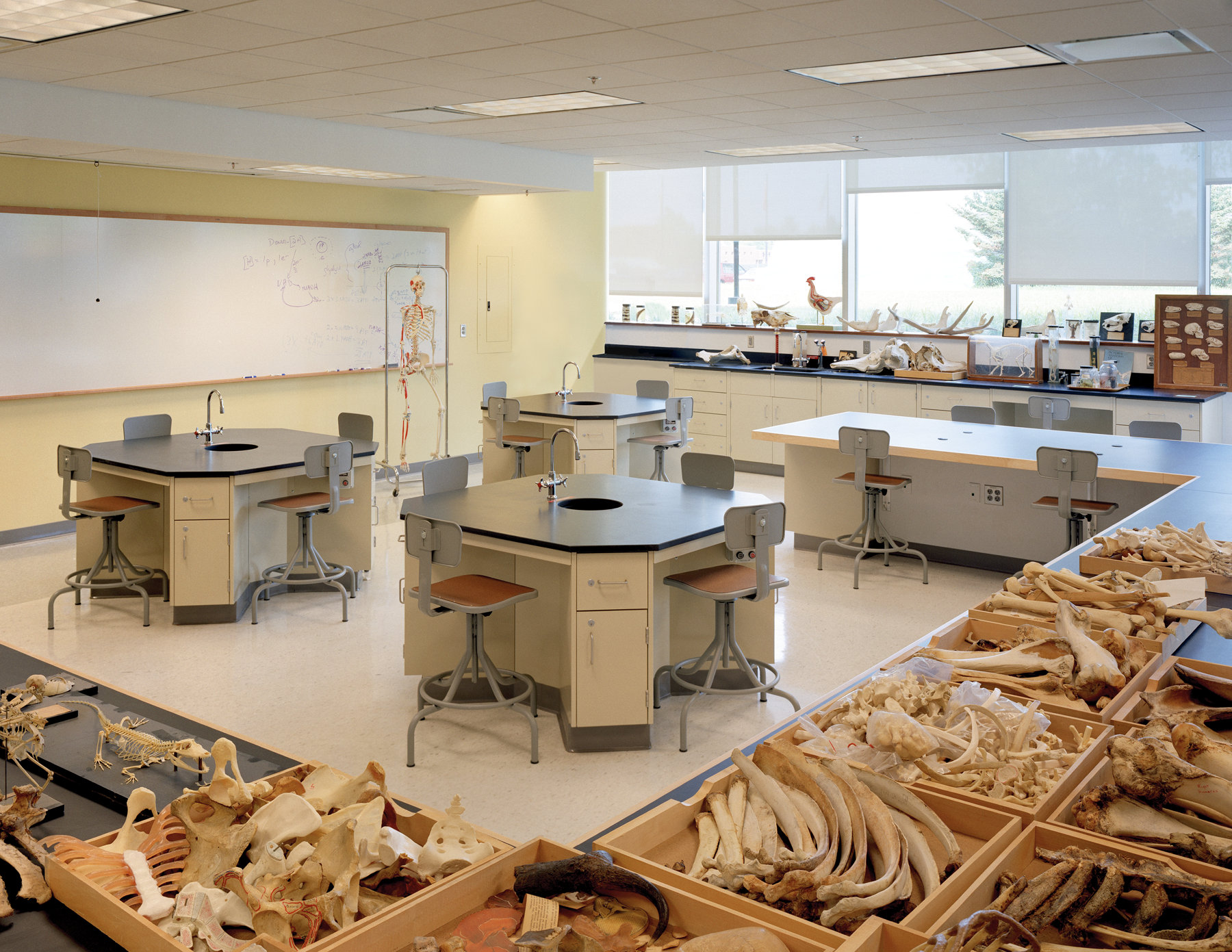
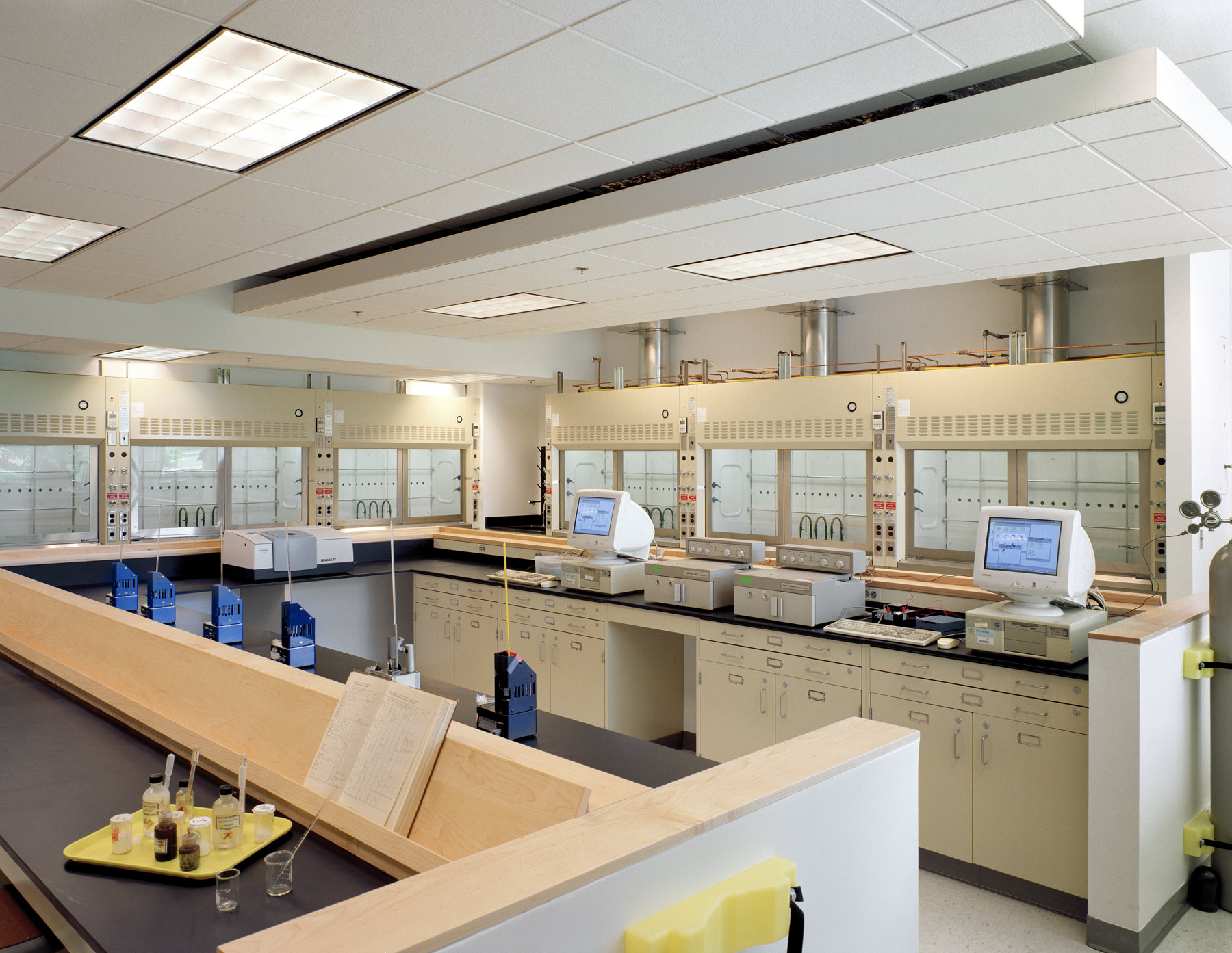
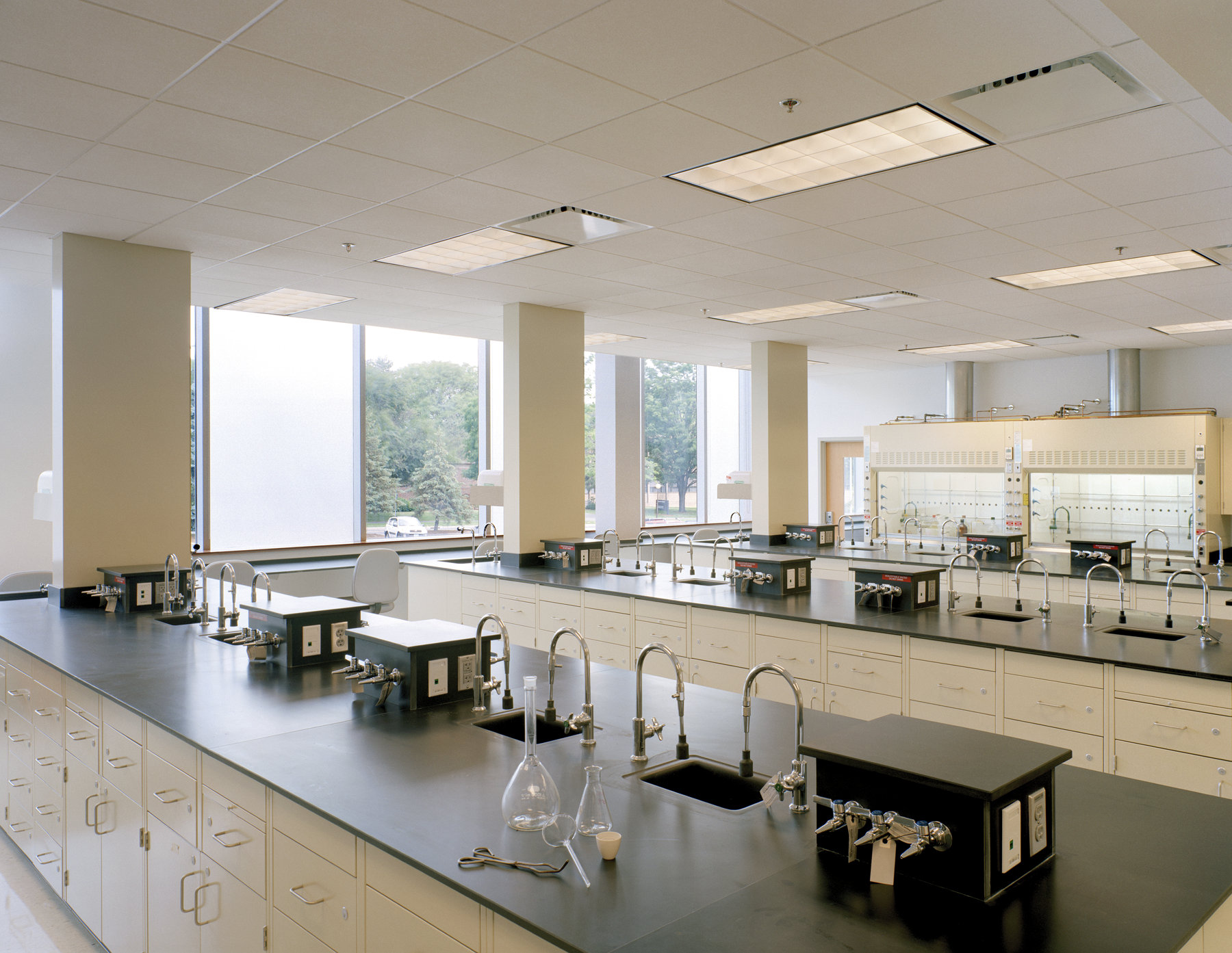
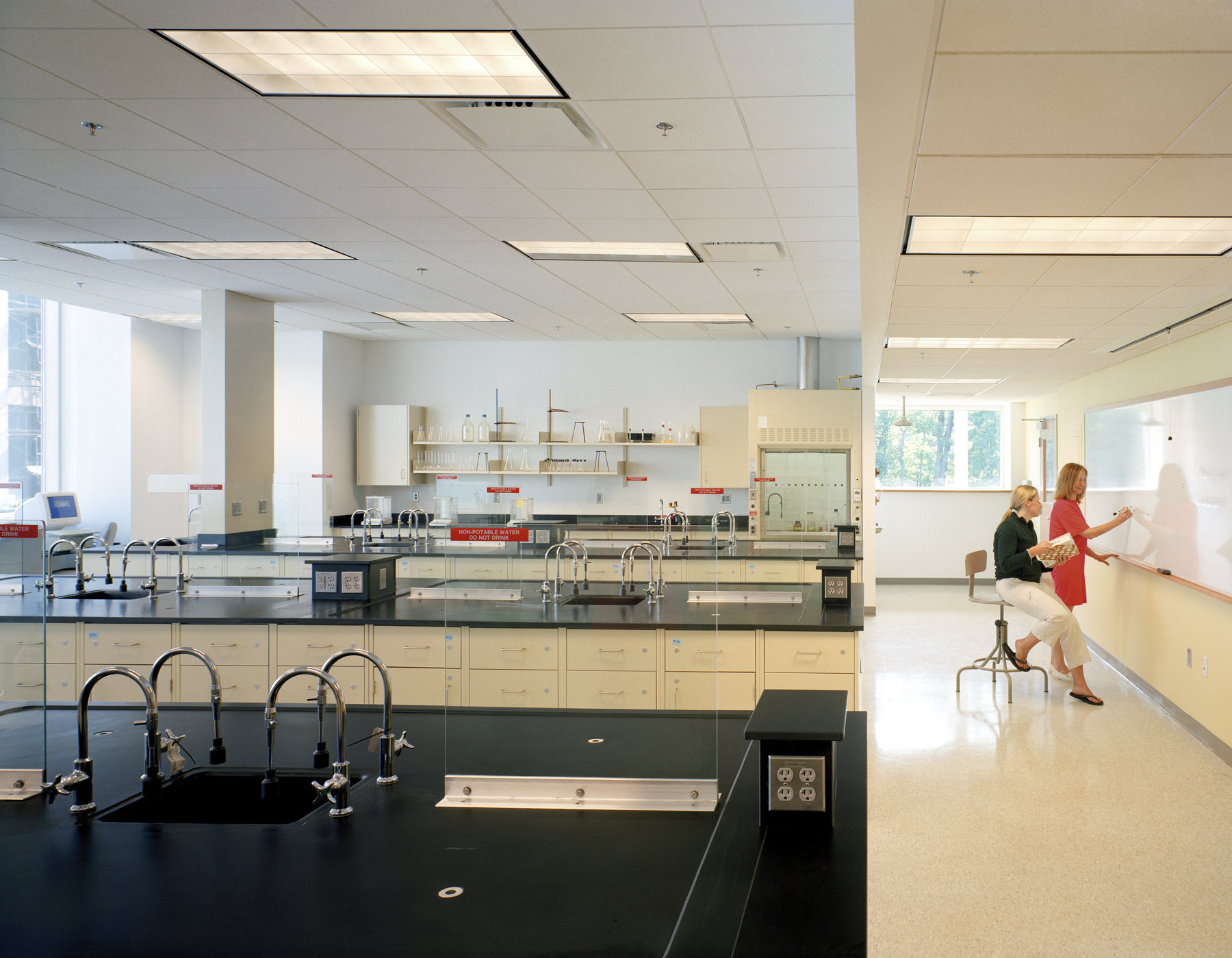
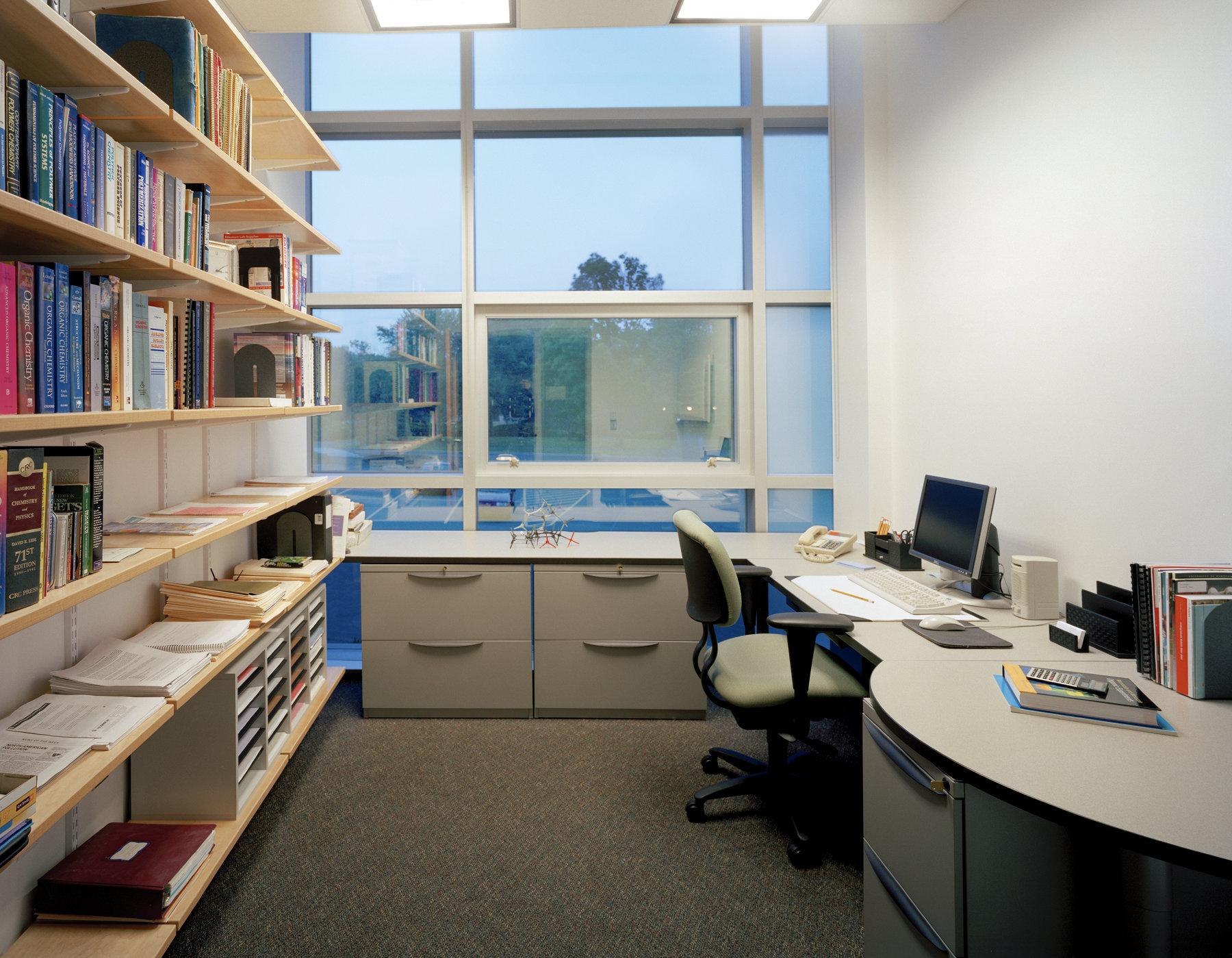
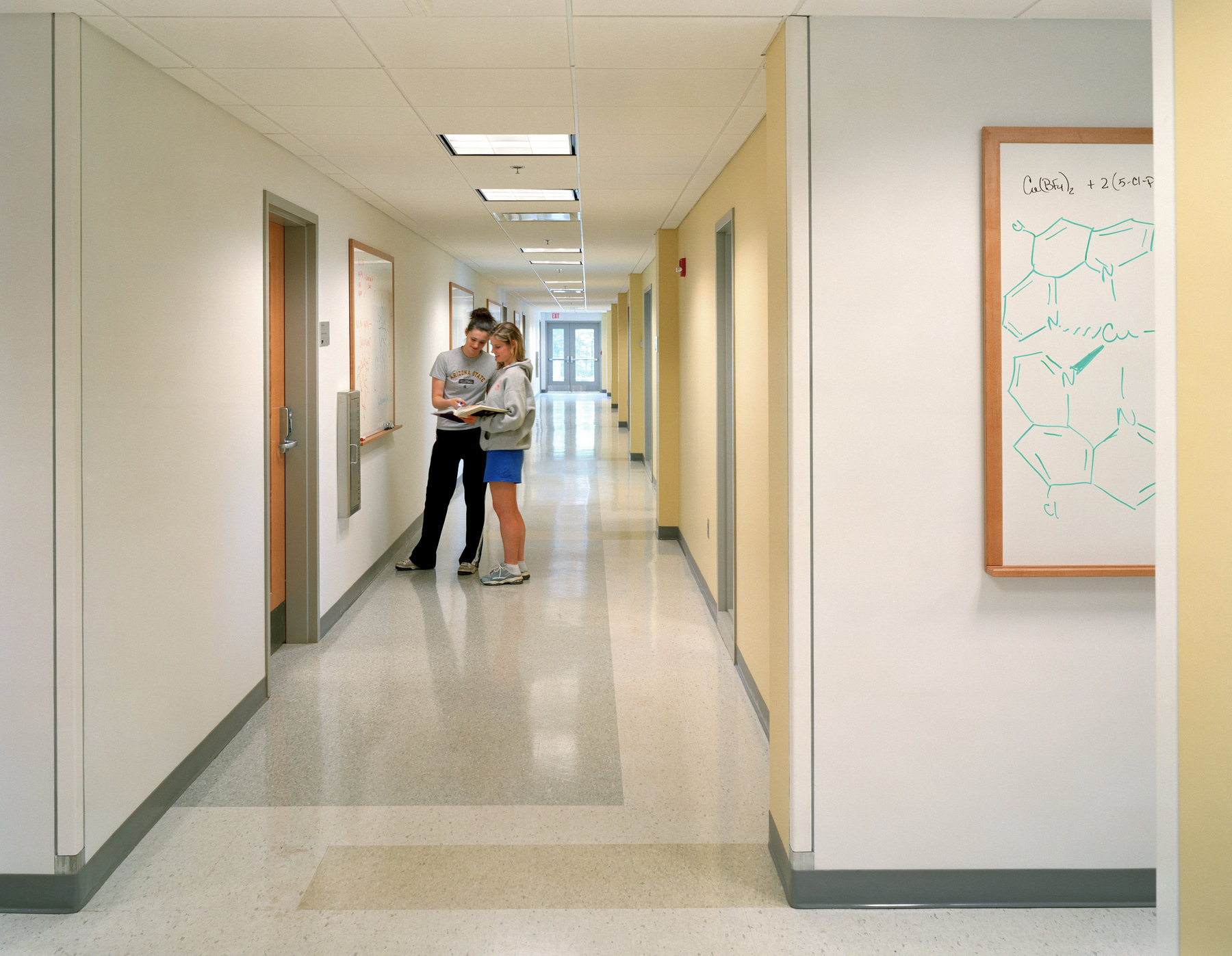
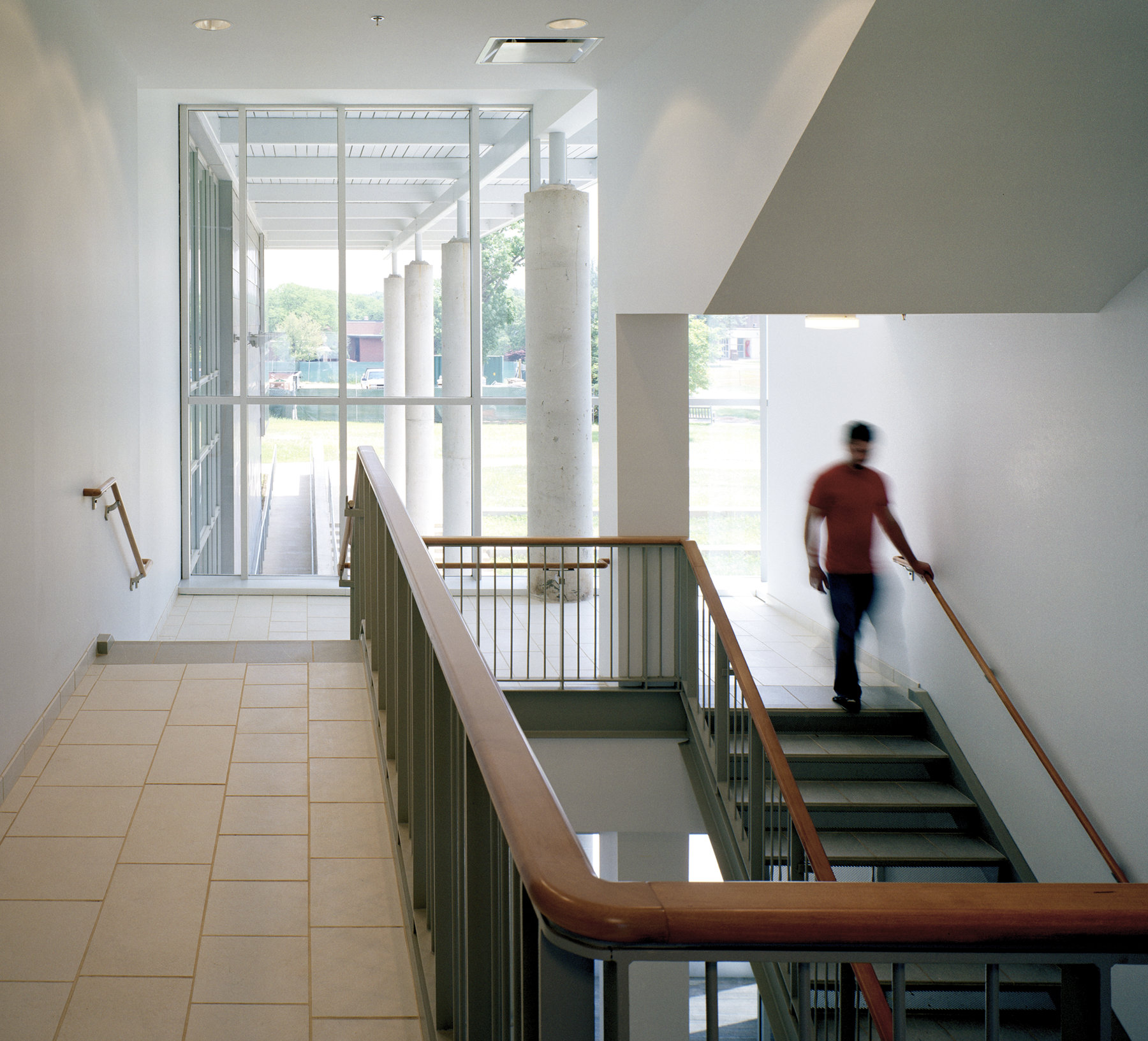
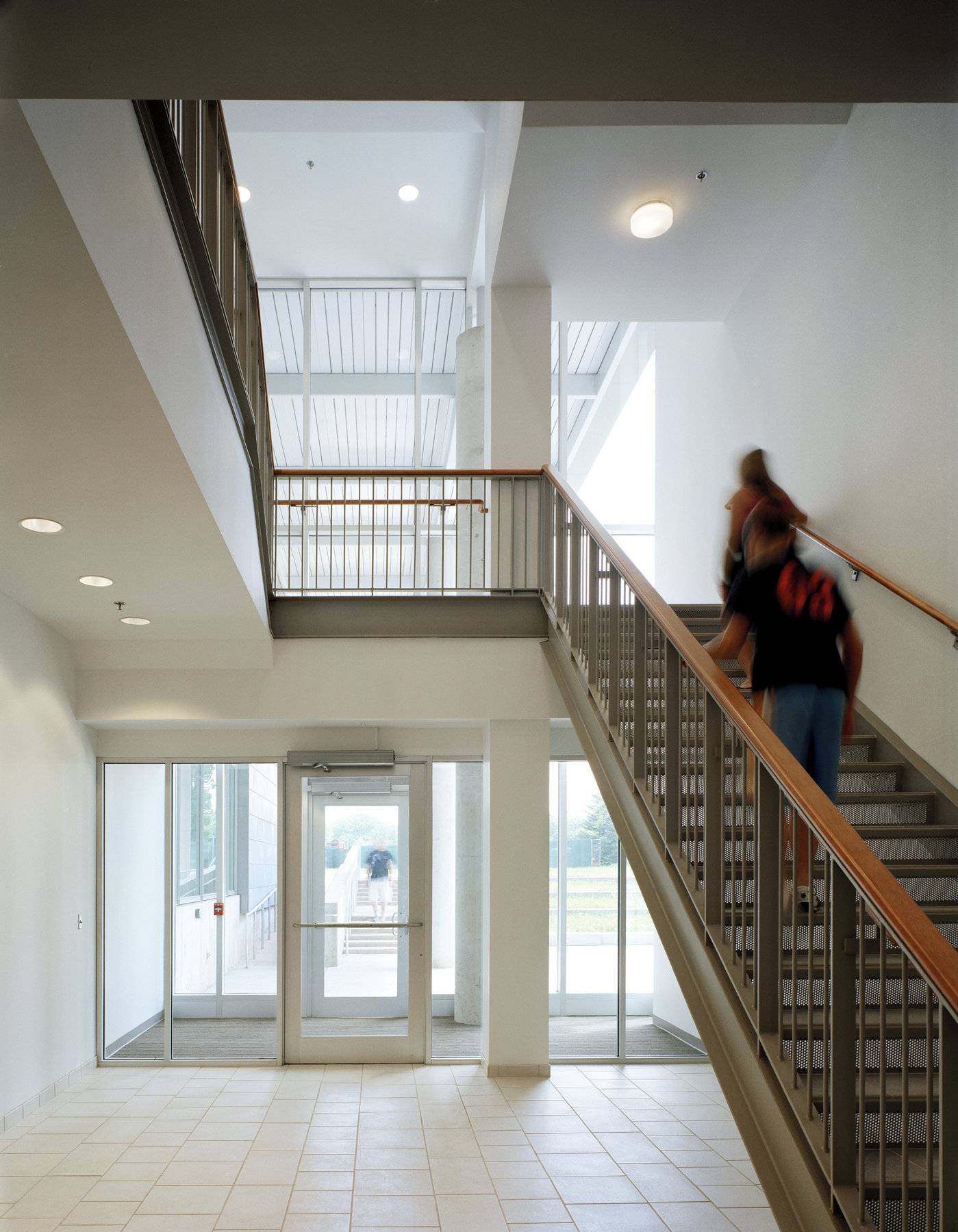
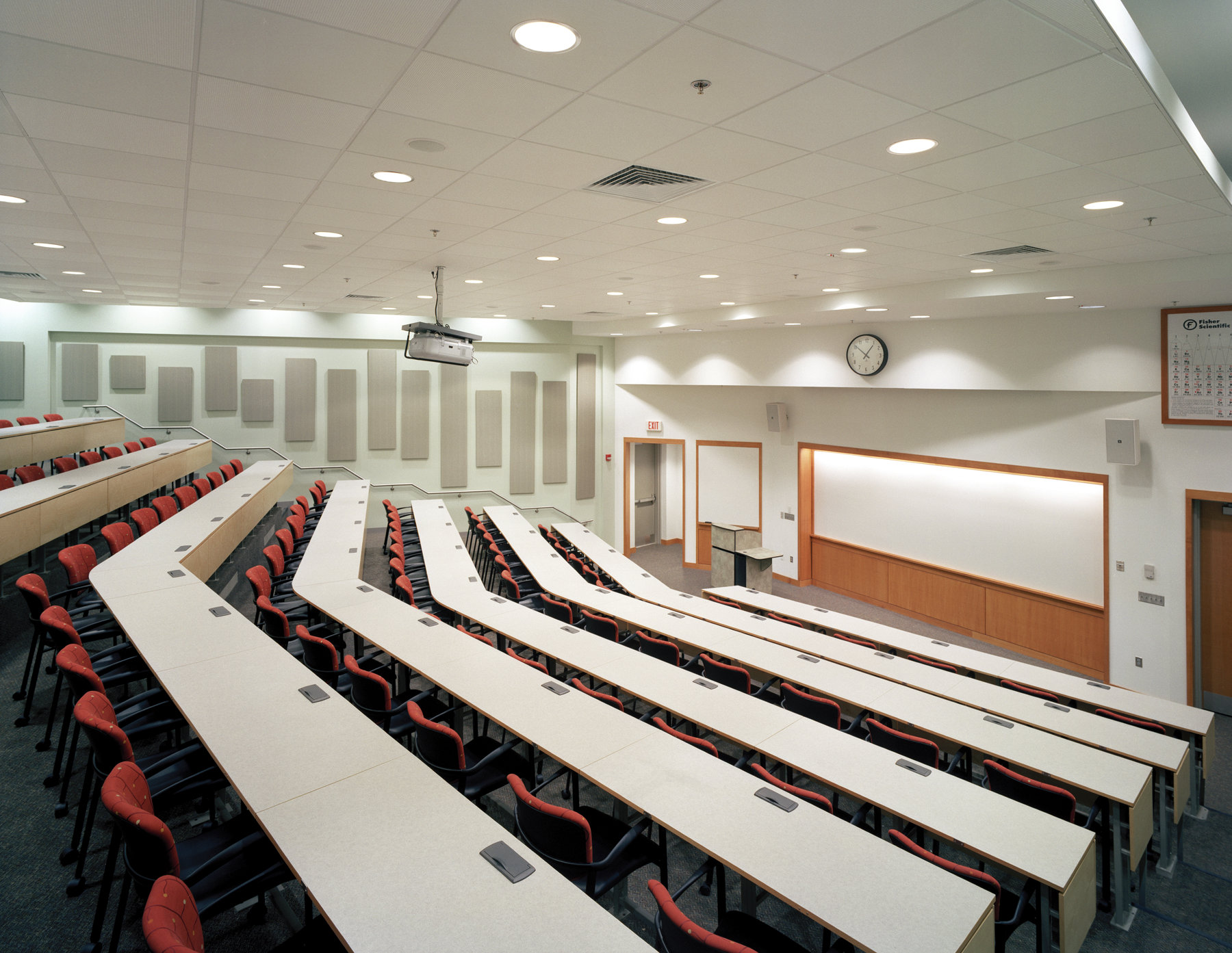
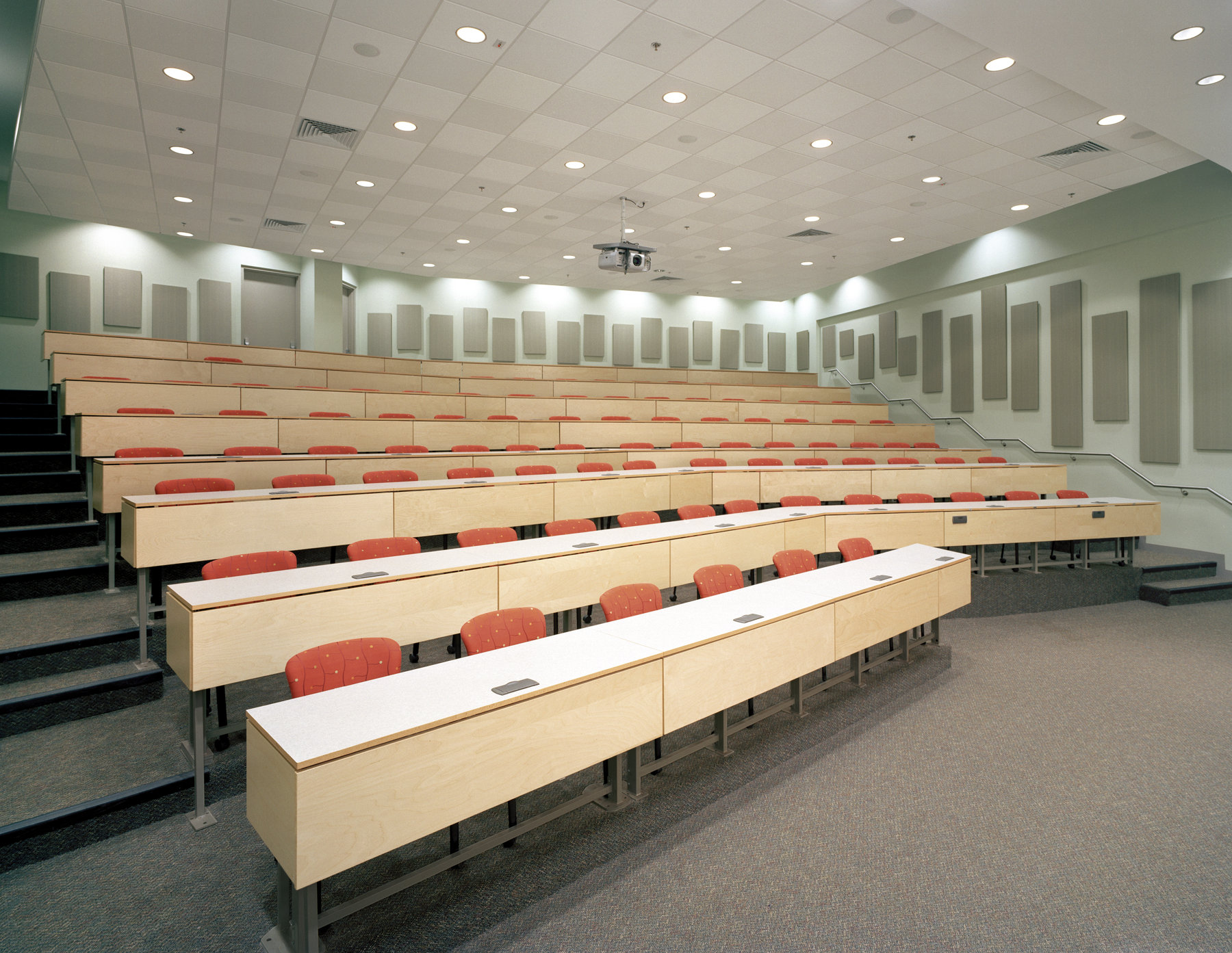
ISET COMPLEX
In 2000, the University of Hartford undertook a study to determine the optimal way in which to integrate physically and spatially the science, engineering, and technology disciplines. One result, on the academic side, was the merger of two colleges (Engineering and Ward School of Technology). The other result, on the facilities side, was the addition of 28,000 net square feet of space to accommodate the decompression of the departments, which had outgrown their quarters over the years.
This new space is found in an addition to Dana Hall, and the creation of the Integrated Science, Engineering, and Technology (ISET) Complex. The complex is comprised of the new Biology and Chemistry Building (37,000 GSF), the renovated Dana Hall (105,000 GSF), United Technologies Hall, and East Hall. These buildings house the Engineering and Technology departments, Integrated Information Technology, Computer Science, Math, Physics, Biology, Chemistry, Health Professions, and Psychology.
The program spaces are organized to make adjacencies optimal for cross pollination among disciplines. Wide corridors and lounges are provided to encourage casual encounters. Renovated Dana Hall becomes a “dry” classroom and office building, while the wet labs of Chemistry and Biology expand and move to the addition, placing the higher technical demands on the new construction.
The new Biology and Chemistry Building extends the architectural language of the campus, while introducing new elements. The campus is characterized by low, horizontal brick buildings, which are sited informally on a common green that runs diagonally along the length of the main campus. The facades of the existing buildings tend to be direct expressions of their structural systems, offering a collection of gridded elevations.
The siting of the building anticipates the possibility of forming a future quadrangle between it and the Art School. The building is clad with zinc panels and glass. It offers a monumentally scaled elevation to the common green, as formal an outdoor space as exists on the campus. The design of the elevations takes inspiration from imagery and principles found in mathematics and natural sciences, such as the Fibonacci Series, genetic mapping, and integrals, allowing the structural system to recede as an expressive element.
Project Details
Location: West Hartford, Connecticut
Client: University of Hartford
Size: 37,000 GSF (Biology-Chemistry Building)
Budget: $10.1 million
Completion: 2005
Consultants: Macchi Engineers (Structural); BR+A (MEP); Fuss and O’Neill (Civil); Towers Golde (Landscape)
Contractor: Shawmut Design & Construction
Awards: Metal Architecture "Honorable Mention, Smooth Walls Category", Design Awards Competition, University of Hartford, ISET Complex, 2006; Merit Award, Associated General Contractors Build New England, University of Hartford, ISET Complex, 2005
Project credit: Wilson Architects (J. Moses, project architect)
Image credit: Anton Grassl
© 2017-2024 Big Bend Studio Architects LLC. All rights reserved.
